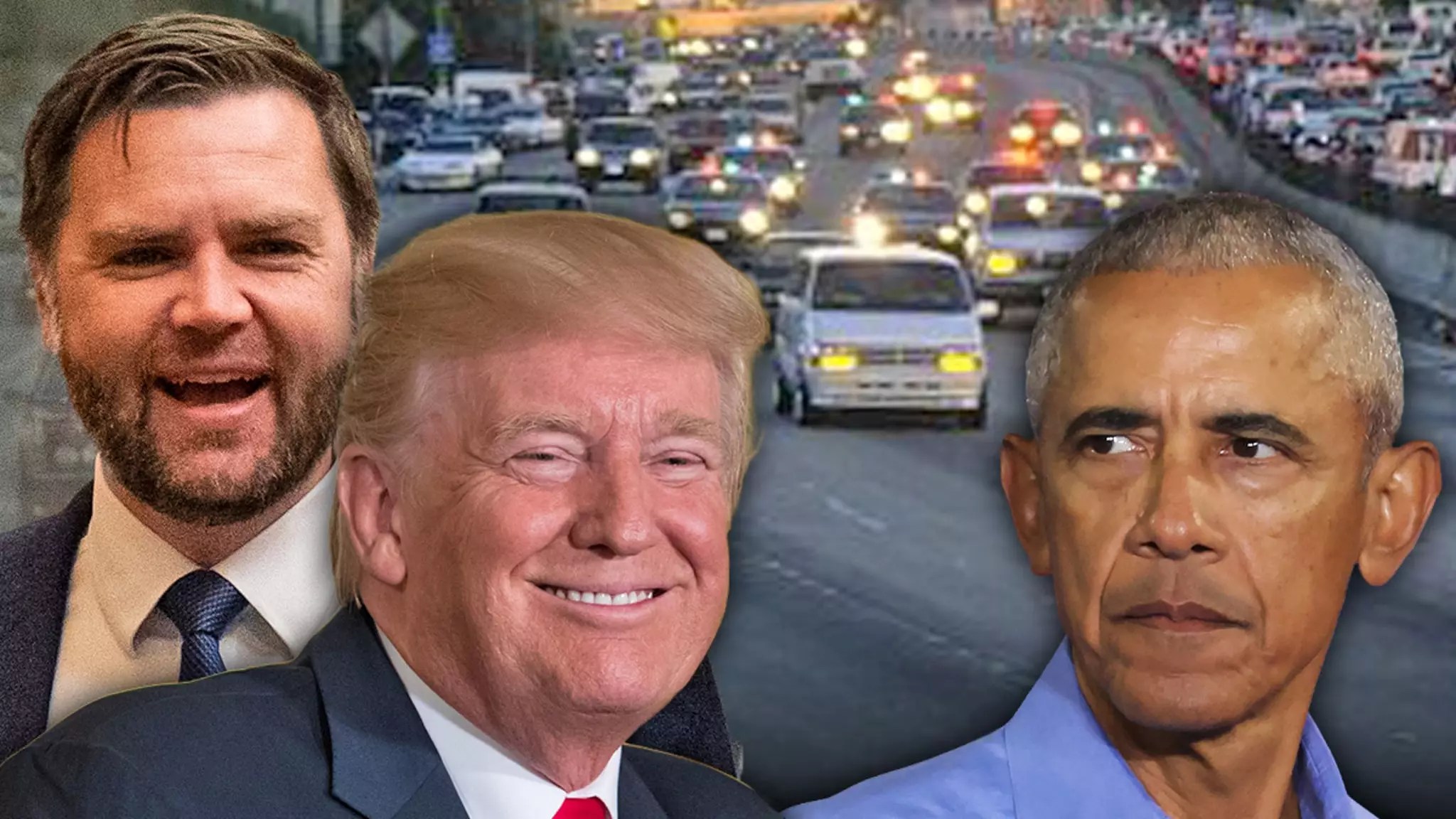In today’s polarized landscape, political figures continuously leverage provocative imagery and memes to sway public opinion and assert dominance. The recent social media post from Donald Trump exemplifies this trend. By retroactively framing himself in the infamous O.J. Simpson chase, Trump taps into a well-known media spectacle to symbolize a larger narrative—one of pursuit, scrutiny, and perhaps even persecution. The choice to pixelate himself into the police car, with Obama in the Bronco, signifies an attempt to connect past scandals with current political battles, blurring the lines between iconic moments and contemporary controversies. Such visual rhetoric isn’t mere entertainment; it’s a calculated move to evoke emotional responses, reinforce existing narratives, and maintain visibility amid ongoing allegations.
The meme’s tone, punctuated by laughing emojis, suggests a dismissive attitude toward the accusations fielded against the former president. This tactic capitalizes on humor and ridicule to undermine opponents and distract from substantive issues. It plays into a broader strategy where visual symbolism becomes an element of political discourse—one that aims to manipulate perception more powerfully than facts or detailed arguments ever could. In this context, the meme functions as both a shield and a weapon, rallying supporters while casting doubt on adversaries’ credibility.
Distraction Politics and the Weaponization of Allegations
The meme’s underlying message appears to be aimed at dismissing, or at least caricaturing, the investigation into alleged collusion between the Trump campaign and Russia. By paralleling Obama’s past controversies with Trump’s current allegations, the administration attempts to frame the investigation as politically motivated and unjustified. This tactic of equivalence, whether justified or not, is a classic distraction technique—shifting attention away from troublesome facts and toward perceived injustices by opponents.
Considering the broader context, the narrative of “treasonous conspiracy” promoted by Trump allies has little basis in conclusive evidence, yet it persists as a powerful rallying cry. When political figures resort to such tactics, they capitalize on the emotional power of suspicion, conspiracy, and victimhood. The meme could be viewed as a calculated distraction, designed not only to bolster supporter morale but also to muddy the waters around the actual substance of the allegations. It’s a strategic move to frame the investigation as a partisan witch hunt rather than an inquiry rooted in justice and accountability.
The Symbiosis of Media, Power, and Public Perception
What remains striking is how modern political conflicts have become intertwined with digital symbolism. Social media platforms democratize political discourse but also amplify the manipulative potential of visual propaganda. Leaders who master this terrain wield tremendous influence, shaping narratives not through policy debates but through well-timed memes and provocative images. This shift reflects a deeper transformation: in an era where attention is fleeting and perception is often reality, the most effective politics may no longer be about facts but about compelling storytelling.
The current episode underscores a fundamental truth—politicians are increasingly using visual storytelling as a weapon of power. Whether through memes, doctored images, or viral videos, the goal remains to shape debate, influence public opinion, and demarcate ideological boundaries. As observers and participants, recognizing this strategy’s potency and pitfalls is vital. The line between genuine debate and spectacle is ever-blurring, and understanding this dynamic empowers citizens to navigate the digital landscape with critical insight rather than emotional impulsiveness.


Leave a Reply